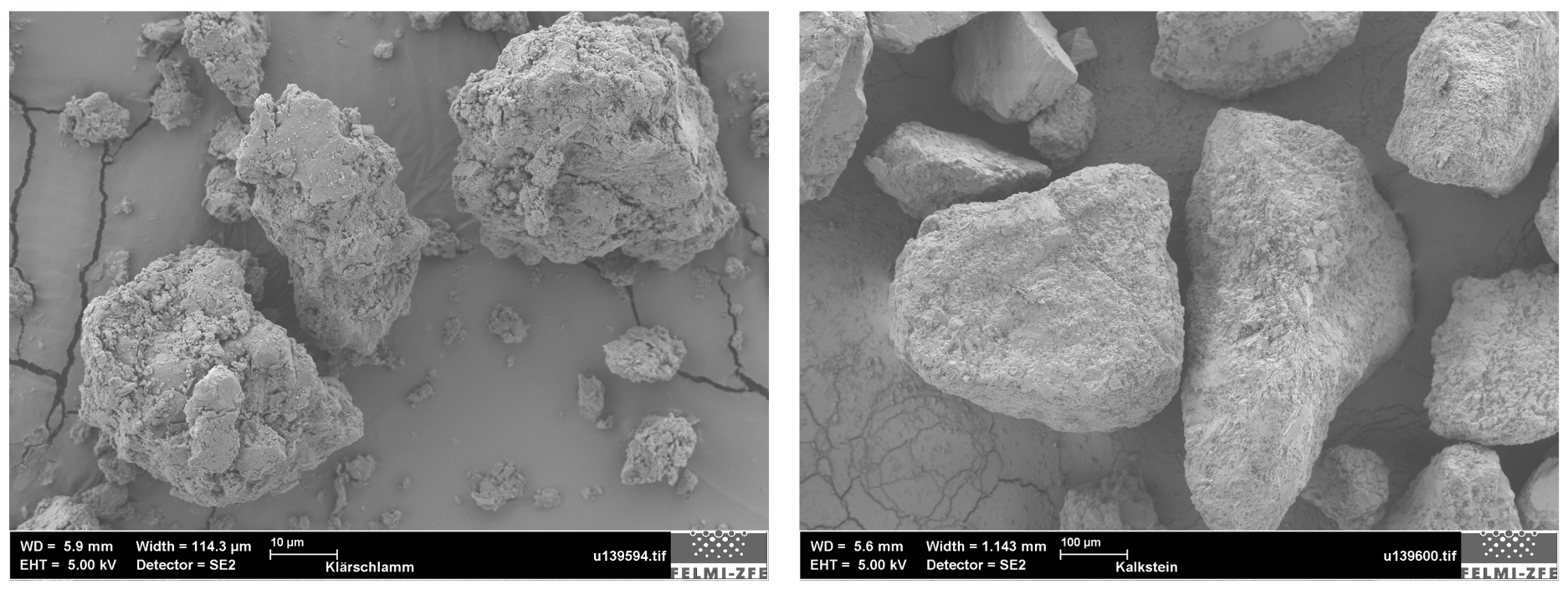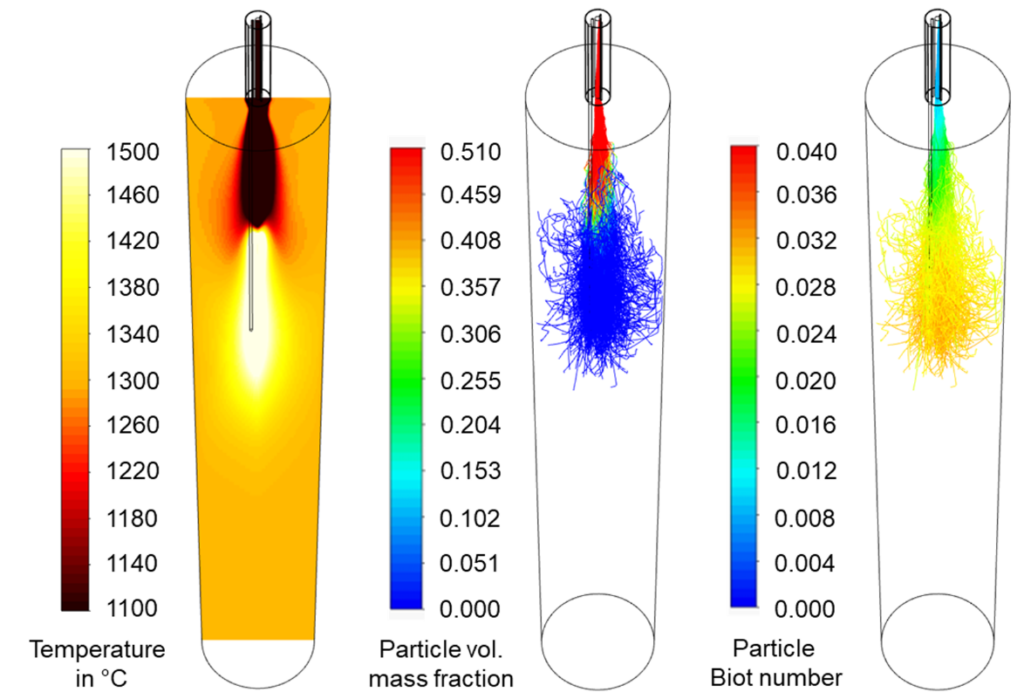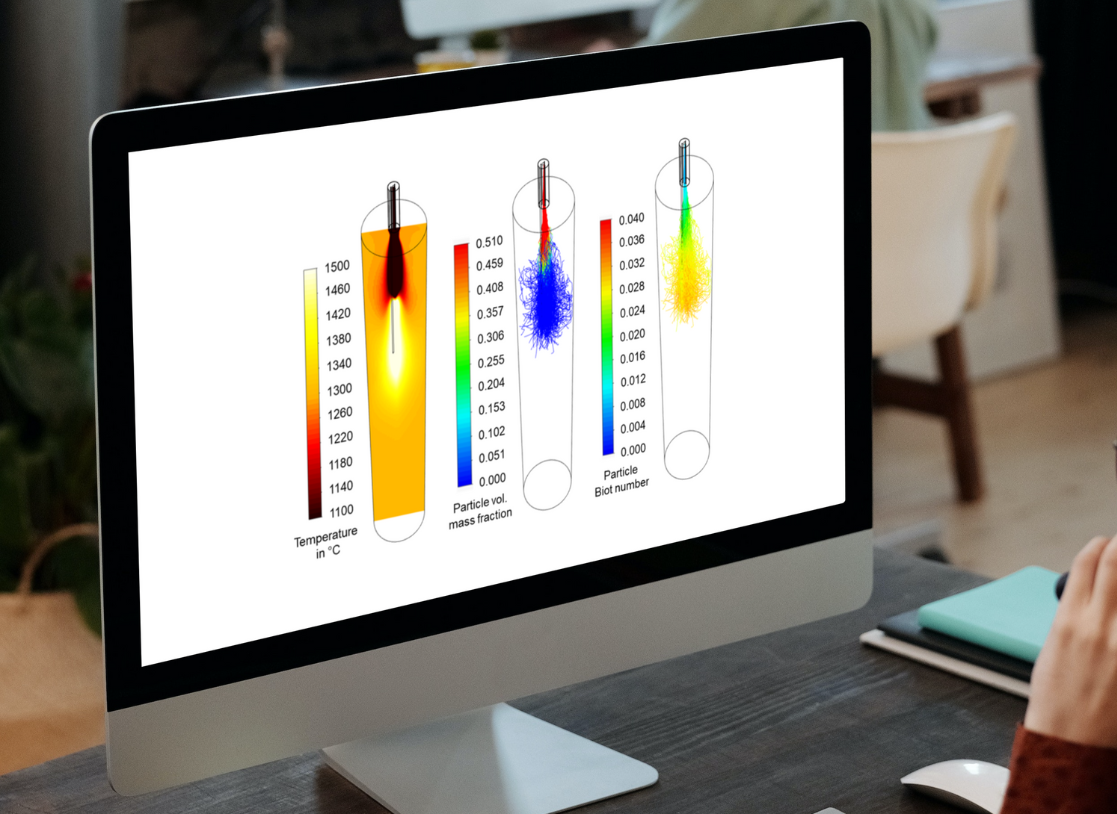Drying the sewage sludge and reducing its size into small particles is the first step in the FlashPhos process. For the optimal operation of the pilot plant Flash Reactor, the basicity of the particulate fuel will be adjusted beforehand. During the experiments at USTUTT IFK, sewage sludge particles were injected into a drop tube reactor together with limestone particles and conveying air. Since the particles are solid at this point and are transported by a gas, we are dealing with a multiphase flow problem.
To calculate how the particles move in cold air, it is essential to know a specific property called “drag coefficient” which mainly depends on the particle shape. Therefore, the particles were analyzed in detail using dynamic image analysis and scanning electron microscopy (Figure 1).

Figure 1: Scanning electron microscope images of sewage sludge (left) and limestone particles (right)
When the particles enter the hot Flash Reactor, they heat up rapidly. They instantly devolatilize, burn and melt, using their own energy content. For the accurate calculation of the heat transfer from the hot gaseous atmosphere in the Flash Reactor to the particles, the so-called “Nusselt number” – a correlation to calculate the particle temperature – was identified.
Both correlations – for the drag coefficient and Nusselt number – were found, experimentally validated and implemented into a Computational Fluid Dynamics (CFD) model. With this model, the burner and the reaction chamber geometries were already successfully improved. Exemplary results of the multiphase flow model are shown in Figure 2.

Figure 2: Flow simulations of the experiments at USTUTT-IFK; Left: Gas phase temperatures; center: Particle volatile mass fraction; right: Particle biot number, a measure for the particle’s thermal thickness
The multiphase flow model is the basis for the simulation model of the Flash Reactor, which will be the main subject in one of our next FlashPhos Blogs. Do you want to learn more about our FlashPhos CFD model? Then take a look at our latest peer-reviewed publication.
For further information contact
Benjamin Ortner
Institute of Thermal Engineering, Graz University of Technology
benjamin.ortner@tugraz.at
+43 (316) 873 7314

